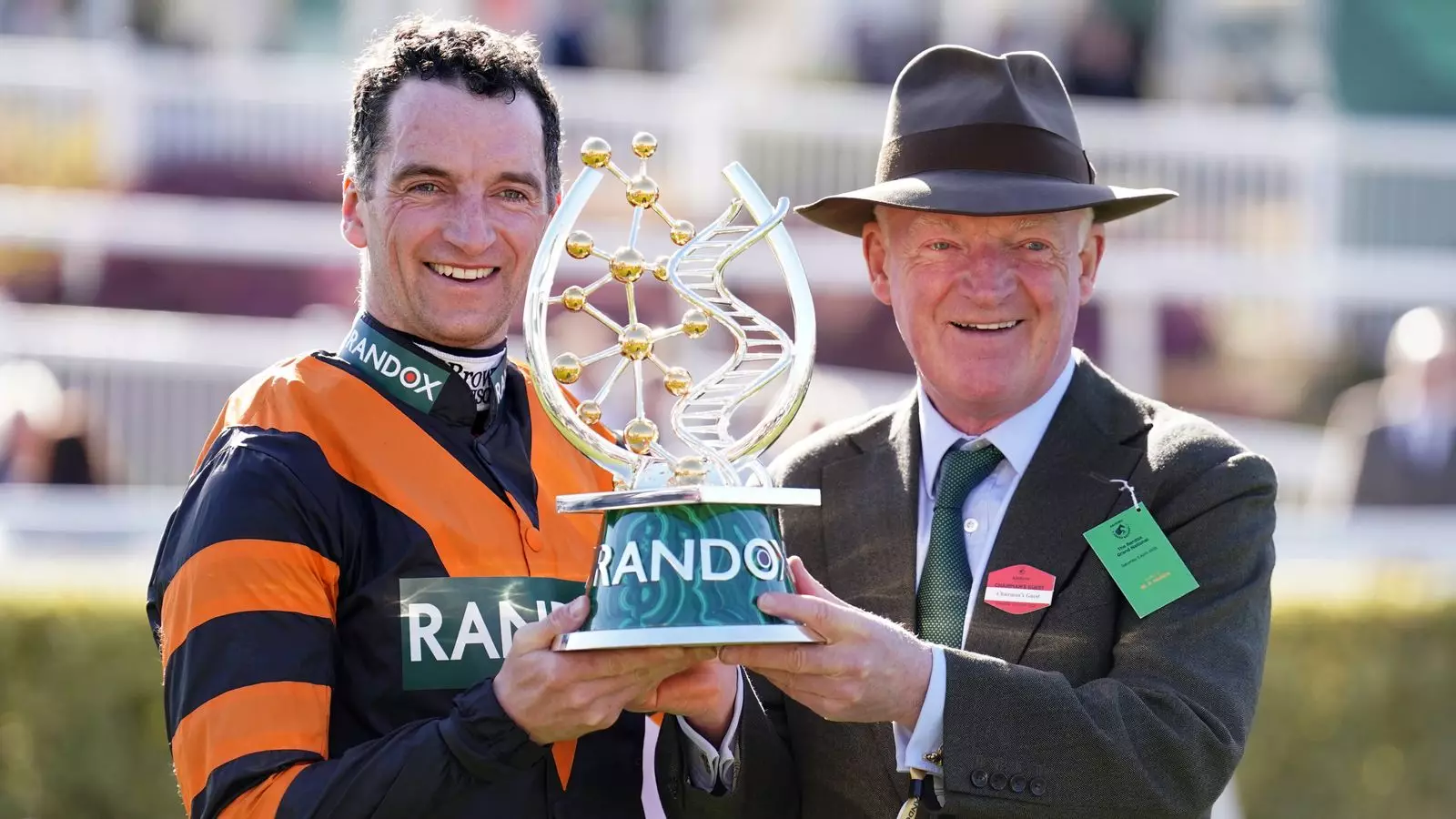The Grand National, an iconic event in the world of horse racing, has once again showcased the drama, passion, and resilience that epitomizes the sport. This year, Irish amateur rider Patrick Mullins secured a poignant victory aboard Nick Rockett, a 33/1 shot trained by none other than his father, the legendary Willie Mullins. This win wasn’t just another notch in the family’s already illustrious belt; it carried a weight that resonated deeply with emotions, legacy, and the bittersweet pangs of loss.
Patrick’s triumph, galloping away from his closest competitor, last year’s champion I Am Maximus, highlighted the Mullins family’s extraordinary talent. Willie Mullins, whose prowess has dominated the soundtrack of racing for decades, witnessed a historic 1-2-3 finish with his other horse, Grangeclare West, taking third. The scene was electrifying as the combined force of father and son unfurled in front of an audience of about 70,000 at Aintree racecourse, solidifying their place in racing lore.
A Legacy Overshadowed by Loss
The narrative isn’t merely one of victory; it’s steeped in the emotional turmoil experienced by Stewart Andrew, the owner of Nick Rockett. His wife, Sadie, who passed away just months prior to the race, was a giant pillar in his life, and her absence was palpably felt during this victory. As Andrew quipped that she would have undoubtedly placed a bet on their horse, the autobiographical details carved a deeper story into the race’s fabric. This event encapsulates the constant yin and yang of life—a spectacular victory alongside an irreplaceable loss.
For many, the Grand National represents the heights of ambition, but for Andrew, the bittersweet nature of winning overshadowed the jubilance typically associated with such moments. This intricate balance humbles even the most hardened athlete, a reminder that every triumph comes with its scars, both personal and universal. In a world fixated on victory, the underlying grief adds a complex layer that resonates with every spectator.
The Irony of Danger in Celebration
While the day marked an unforgettable triumph for the Mullins family, it also thrust into the spotlight the ongoing debate surrounding the safety of horse racing. The Grand National has a reputation as one of the most perilous events on the circuit, characterized by its imposing fences and demanding distance. This year, the race experienced changes aimed at improving safety—reducing the number of competitors, introducing a standing start, and altering the fences. As commendable as these initiatives may be, the question lingers: Can the thrill of the race ever truly be separated from its inherent risks?
The inherent danger poses moral dilemmas. For every story of a champion like Patrick Mullins, there are countless tales of accidents and crashes, reminding us of the razor-thin line between the celebration of life and the specter of tragedy. Reformative efforts are essential, yet they inevitably stir arguments concerning the essence of horse racing itself. At what point does the thrill morph into something unmanageable?
Unearthing the Feelings of Youth and Dreams
Patrick Mullins’ own reflections resonated with nostalgia. For him, the dream of winning the Grand National dates back to his childhood, where he idolized legendary figures like Red Rum. The moment he took victory seemed preordained, gravitational, something that had been cultivated across decades. Yet, even as he stood with the glittering trophy in hand, one couldn’t help but sense the dichotomy of joy intertwined with an unrelenting sense of longing for achievements shared with our loved ones who are no longer present.
His candidness about the nerves leading to his victory serves as not only a reflection of the pressure on amateur riders but the emotional weight every participant carries. The race was a manifestation of aspirations and heartbreak—but it was also a tribute to every fan who cherished the essence of horse racing, creating an environment where every win is a complex mosaic of collective stories.
In its essence, the Grand National transcends mere competition—it encapsulates the heartbreak, the dreams, and the intricate dance of triumph and tragedy that defines human existence. While Patrick Mullins’ name is etched in history, the bittersweet undertones of this victory remind us that such moments are forever tinged with the colors of life’s greater narrative.


Leave a Reply